Explore the legacy of double knots, intricate medallions, and the timeless elegance of Middle Eastern weaving.

In a digital-first design world, where speed and automation dominate, many textile designers are pausing to look back. The allure of Turkish and Persian rugs—handwoven tapestries layered with history, symbolism, and soul—continues to inspire today’s most compelling interior trends. But translating that legacy into commercial or contemporary collections isn’t always straightforward. How do you honor the intricacy of tradition while streamlining modern design workflows?
Whether you’re recreating the rustic warmth of an Anatolian medallion or reimagining a Persian floral motif with bold modern colors, NedGraphics’ design software equips you with tools to make history feel fresh.
In this article, we’ll explore:
Turkish and Persian rugs have long been recognized as masterworks of textile craftsmanship. Originating as early as the Bronze Age in Anatolia and the height of the Persian Empire in Iran, these woven pieces weren’t just decor—they were status symbols, storytelling devices, and cultural time capsules.
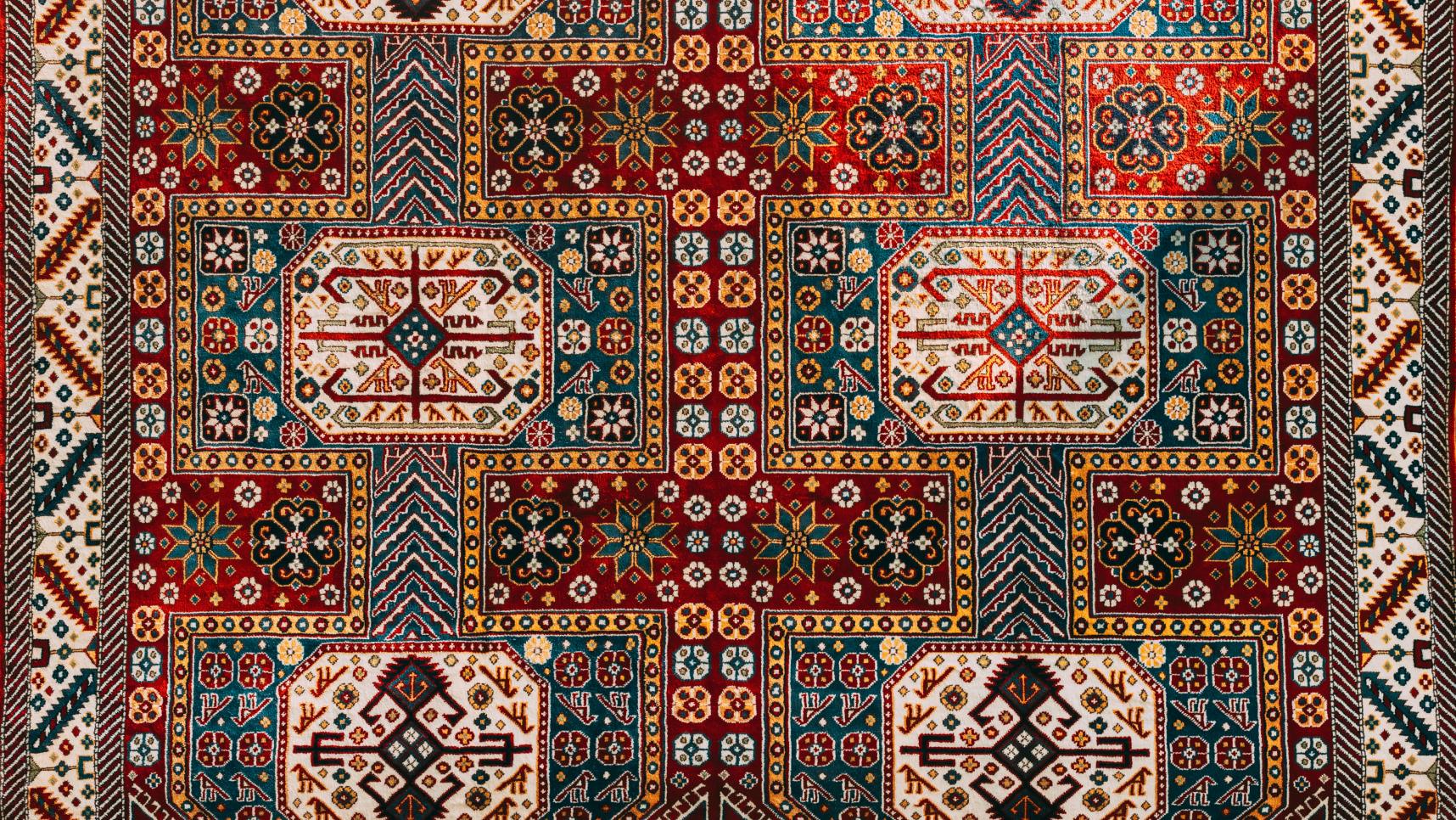
From the bold medallions of Konya to the soft florals of Oushak, Turkish rugs offer a wide spectrum of styles shaped by geography, tradition, and symbolism. Whether rustic or refined, their beauty lies in the details: woven with intention, meaning, and craftsmanship passed down through generations.
Traditionally crafted using locally sourced wool, silk, and cotton, Turkish rugs are renowned for their rich texture and durability. The weaving process most often incorporates the Gördes knot (also known as the Turkish or symmetrical knot), a double-loop knot that wraps around two warp threads, forming a strong, balanced structure that resists wear and holds intricate designs with clarity. This method results in a denser pile and more durable surface, ideal for both decorative and functional purposes in high-traffic areas.
According to The Textile Museum Journal and scholars of Islamic art, ‘Turkish rug motifs often reflect tribal identity, regional folklore, and spiritual symbolism.’ Each geometric shape—whether it’s a star, a ram’s horn, or a hooked medallion—can represent protection, fertility, or power. These motifs are not purely decorative; they often tell a story or signify the weaver’s life stage, regional affiliation, or belief system.
The color palette is typically rooted in natural, plant-based dyes, with earthy reds, warm yellows, indigos, and soft greens derived from madder root, indigo leaves, walnut husks, and pomegranate rinds. These dyes not only produce vibrant, long-lasting hues, but they also age beautifully, developing a subtle patina over time that further distinguishes authentic Turkish rugs from synthetic imitations.
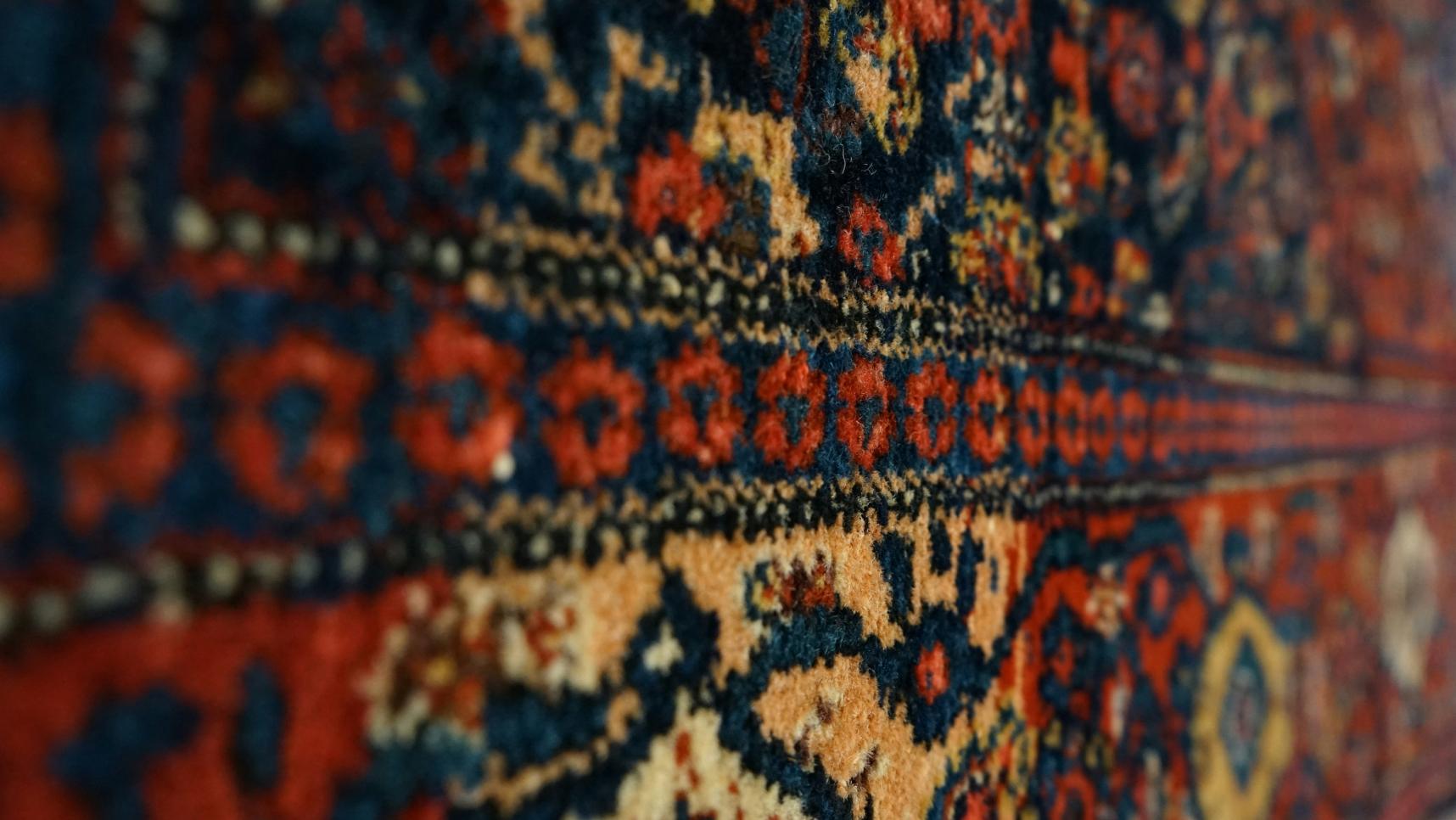
Among Turkey’s most revered weaving traditions is that of Hereke, a town renowned for producing some of the world’s finest silk carpets. Established in the mid-19th century under the patronage of the Ottoman Empire, Hereke workshops were originally commissioned to create rugs exclusively for the palaces of the sultans. Woven with exceptional fineness using the traditional Gördes (Turkish) double knot, Hereke carpets quickly earned a reputation for luxury, precision, and imperial grandeur.
What distinguishes Hereke rugs is their unmatched knot density—sometimes exceeding 1,000 knots per square inch—and their use of silk, gold, and silver threads to create highly detailed, luminous surfaces. Their patterns often incorporate elaborate floral motifs, symmetrical medallions, arabesques, and Ottoman emblems, woven in deep jewel tones and regal palettes. Today, Hereke carpets remain a symbol of status and artistry, prized by collectors and displayed in museums and presidential residences around the world.
Key Characteristics of Authentic Turkish Rugs
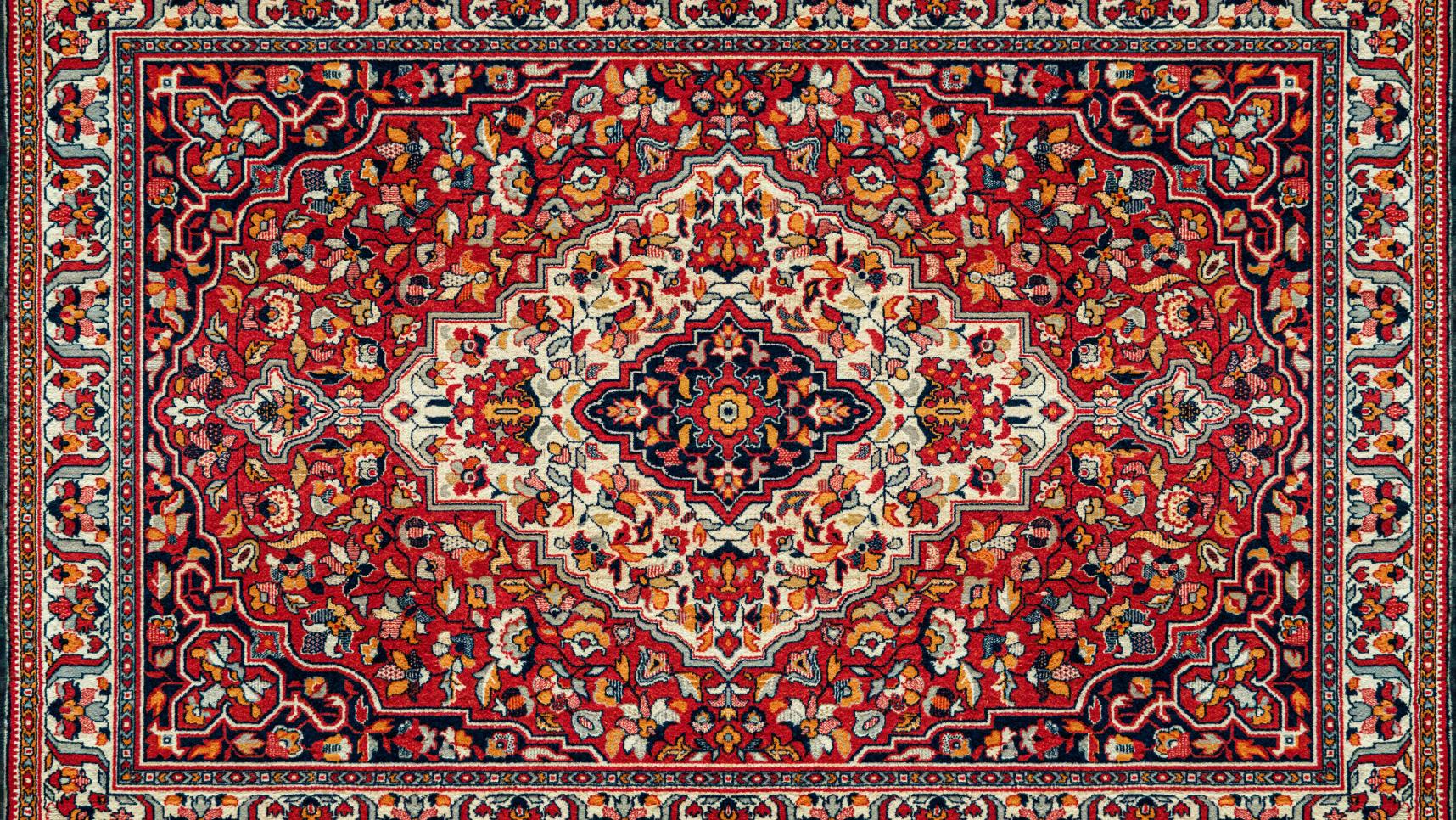
Persian rugs are celebrated globally for their exquisite craftsmanship, intricate detail, and cultural storytelling.
Hand-knotted using fine wool, pure silk, or a blend of both, these rugs demonstrate a level of artistry that few other textiles can match. The materials themselves play a crucial role: Persian wool is prized for its softness, sheen, and resilience, while Persian silk elevates the design to breathtaking levels of delicacy and luminosity.
What sets Persian rugs apart is not just the richness of their materials but their complex weaving techniques. Unlike the symmetrical knots found in Turkish carpets, Persian rugs often use the asymmetrical Senneh knot (also called the Persian knot). This method involves looping the yarn around only one warp thread before slipping under the adjacent one, allowing greater flexibility and finer detail. The Senneh knot enables weavers to craft high knot-density rugs—often exceeding 400 knots per square inch—which allows for the breathtakingly intricate floral, curvilinear, and pictorial designs that define Persian carpets from regions like Tabriz, Kashan, and Qom.
The designs themselves are highly symbolic, often representing gardens of paradise, mythological tales, and elements of Persian poetry and architecture. For example, Tabriz carpets might showcase hunting scenes, Kashan rugs often feature symmetrical central medallions surrounded by arabesques, and Qom silk rugs are known for delicate floral vines and luminous color palettes.
Color plays a similarly vital role. Traditional Persian rugs are dyed using natural materials—madder root for reds, indigo for blues, walnut husks for browns, and pomegranate rind for yellows—creating rich, layered tones that mature and develop a coveted patina over time. These natural dyes not only contribute to the depth and complexity of the rug’s aesthetic but also enhance its longevity, allowing the colors to remain vivid for decades, even centuries.
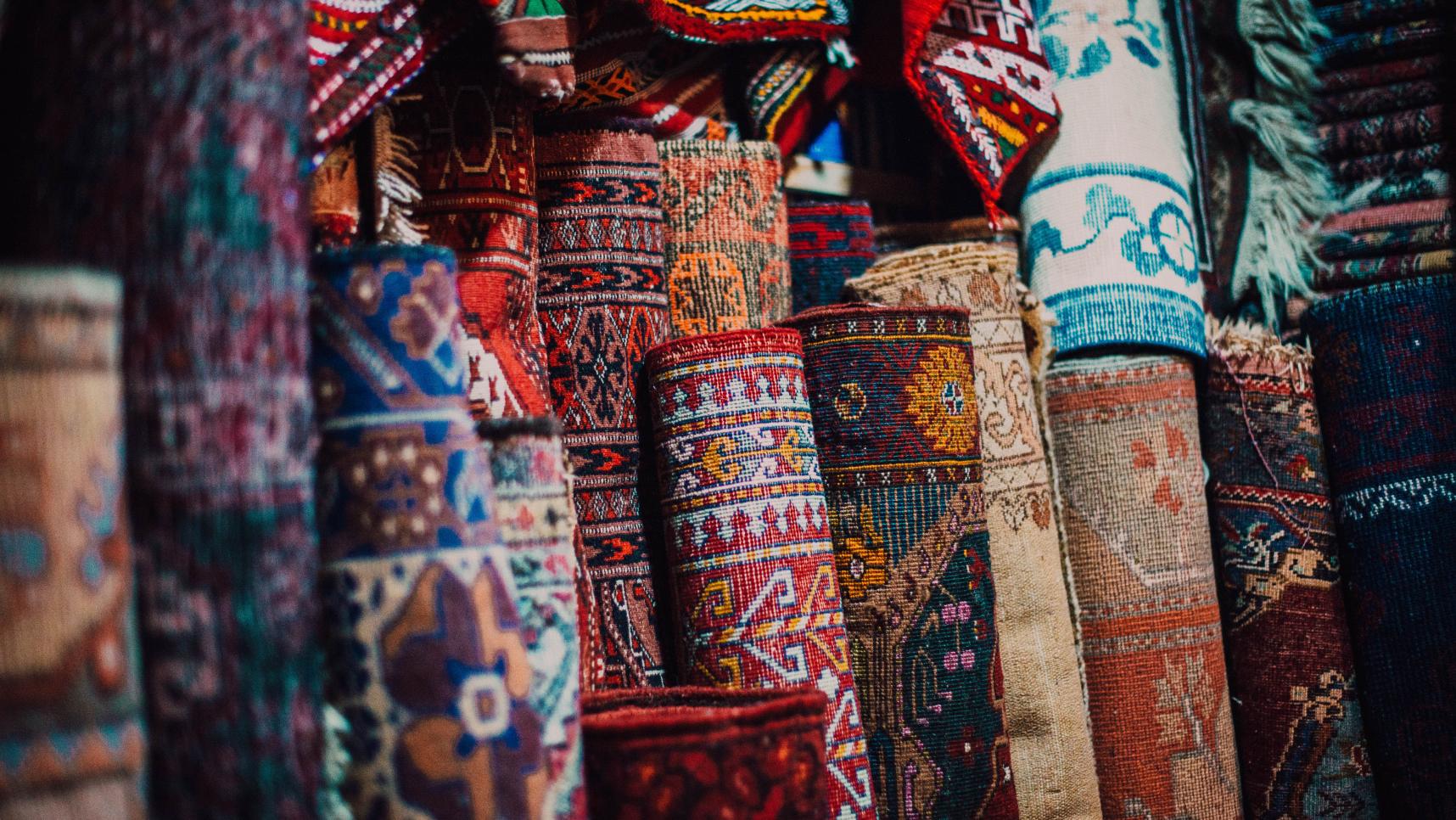
Designing with a historical reference point isn’t just about reproduction—it’s about reinterpreting cultural stories for a new generation. Turkish and Persian rugs were born from centuries of symbolism: medallions representing the universe, floral motifs echoing the gardens of paradise, and bold geometrics that speak to tribal identity. These weren’t random decorations; they were a visual language.
Today’s creative challenge is more exciting than ever: how can designers translate these ancient motifs into patterns that resonate with modern life? How might a medallion from a 16th-century Tabriz carpet inspire the graphic layout of a contemporary luxury throw? Could the geometric rhythm of an Anatolian rug inform a bold, abstract upholstery print for a minimalist loft?
Yet manually adapting these intricate designs—capturing their nuance while evolving them for today’s aesthetic—can be time-consuming and difficult.
Designers are tasked with more than recreating historical beauty; they must bridge past and present. Maintaining the intricate detail of a Qom silk rug or the bold symbolism of an Anatolian weave—while aligning color, scale, and production realities for today’s interiors—can be a painstaking, manual process without the right tools.
NedGraphics empowers designers to digitize, manipulate, and reimagine historic motifs with both creative freedom and precision control. Whether you’re adapting a muted Oushak palette for a high-end contemporary carpet collection or layering Tabriz floral motifs into a modern bohemian print, NedGraphics’ tools help you preserve the soul of tradition while making it newly relevant.
After decades of minimalist interiors dominated by cool neutrals and clean lines, designers and homeowners alike are craving more depth, history, and individuality in their spaces. As a result, the bold artistry, layered symbolism, and vibrant textures of Turkish and Persian rugs are undergoing a global renaissance.
No longer confined to traditional homes, these ancient designs are now reinvented to fit modern lifestyles, bohemian aesthetics, and even ultra-contemporary interiors. The appeal lies in their ability to inject spaces with authenticity, warmth, and a global sensibility—qualities that feel increasingly rare in today’s fast-paced, mass-produced design world.
Consumers are seeking decor that tells a story, not just fills a space. Antique rug motifs inherently carry centuries of cultural meaning, providing that authentic narrative.
After years of minimalism, there's a hunger for visual richness—layered colors, patterns, and textures all at once, anchored by heritage-inspired textiles.
Handwoven designs align with the growing appreciation for craftsmanship, sustainable practices, and items that endure rather than follow fleeting trends.
Persian and Turkish patterns are being adapted into everything from urban boho apartments to high-end hotel lobbies, proving their timeless versatility.
Persian Gabbeh rugs with their rustic simplicity are layered with rattan chairs, linen sofas, and woven baskets to create relaxed, nature-inspired living spaces.
Rich Tabriz medallions, ruby reds, and bold blues act as anchor pieces in eclectic homes filled with vintage finds, velvet upholstery, and curated art collections.
Retailers like Anthropologie, West Elm, CB2, and Pottery Barn now feature rug-inspired motifs not only on floor coverings, but also across bedding, wall art, lampshades, and even printed wallpapers.
In ultra-modern interiors, muted Oushak rugs and neutral-toned Turkish kilims add just the right touch of texture and quiet luxury without overwhelming sleek architectural spaces.
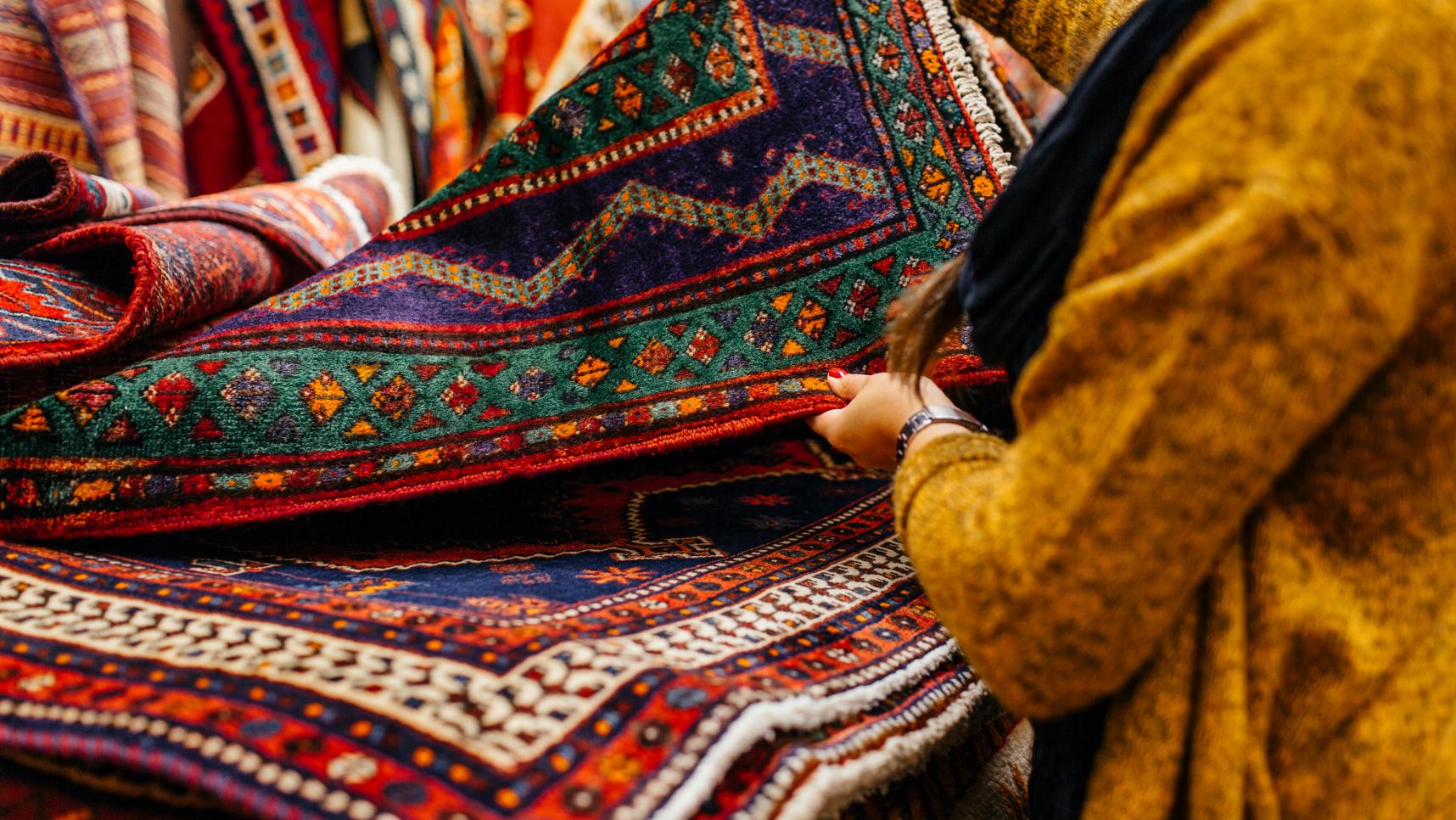
From the handwoven medallions of Anatolia to the luminous silk florals of Persia, Turkish and Persian rugs have shaped not only global decor but the very language of pattern, color, and texture that designers still speak today. Their timeless beauty reminds us that storytelling through textiles transcends generations—and continues to evolve with each new hand that touches it.
Today’s designers stand at a powerful crossroads: the opportunity to preserve the soul of traditional craftsmanship while reshaping it for contemporary living. Whether it’s breathing new life into a centuries-old motif, reimagining a historic color palette for a modern market, or translating woven symbolism into new visual narratives, creativity flourishes when history and innovation meet.
With NedGraphics, that bridge becomes even stronger. Our tools empower you to honor the mastery of the past while unleashing your boldest ideas for the future—streamlining your workflow, enhancing your designs, and helping you bring meaningful, beautiful creations into today’s world.
The next chapter of textile design isn’t just about reviving ancient artistry.
It’s about carrying it forward—and making it your own.
Discover how NedGraphics Texcelle, Tuft, and True Coloring can bring your next design story to life. Explore NedGraphics